|
|
| Line 100: |
Line 100: |
|
| |
|
| =Testing the new loop back device= | | =Testing the new loop back device= |
|
| |
|
| |
|
| |
| {| width="50%"
| |
| | valign="top" |
| |
| From the Windows host try to open the URL<br>
| |
| *http://192.168.2.220
| |
| *http://192.168.2.221
| |
| From an Network client try to open the URL<br>
| |
| [[File:03-01-10-AddHWLoopback.png|320px]]<br><br>
| |
| | valign="top" |
| |
| Edit the properties of '''IPv4''' of the loopback adapter<br> <br>
| |
| [[File:03-01-11-LoopbackPropertie.png|320px]]<br><br>
| |
| |}
| |
|
| |
|
| |
| {| width="50%"
| |
| | valign="top" |
| |
| From the Windows host try to open the URL<br>
| |
| *http://192.168.2.220
| |
| *http://192.168.2.221
| |
| From an Network client try to open the URL<br>
| |
| [[File:03-01-10-AddHWLoopback.png|320px]]<br><br>
| |
| | valign="top" |
| |
| Edit the properties of '''IPv4''' of the loopback adapter<br> <br>
| |
| [[File:03-01-11-LoopbackPropertie.png|320px]]<br><br>
| |
| |}
| |
|
| |
|
| |
|
| |
|
| |
|
| |
|
| |
|
| |
|
| |
|
| {| width="70%" | | {| width="70%" |
Revision as of 18:56, 10 July 2015
Main
|
Step by step installation and documentation for Windows (lots of screnn shots).
- Goal: Adding a Windows test client to our myLVS environment
- Windows Server 2012 (using your own license key)
- IIS installed
- Computer name used: myLVS-Win-Client
- IP Address: 192.168.2.221
- Loopback IP Address: 192.168.2.220
|
Overview
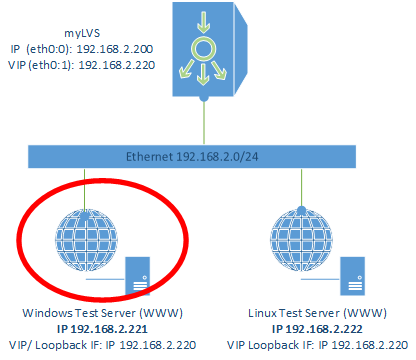
|
Add a new loop back device
|
Click on Run
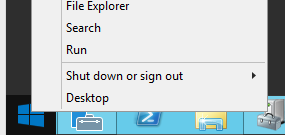
|
Enter mmc devmgmt.msc to open
the Device Manager
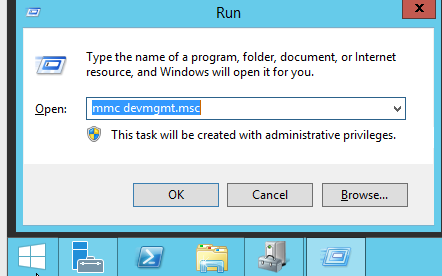
|
|
Right mouse click on your computer,
select Add legacy hardware
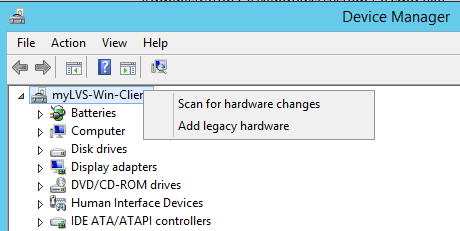
|
Confirm
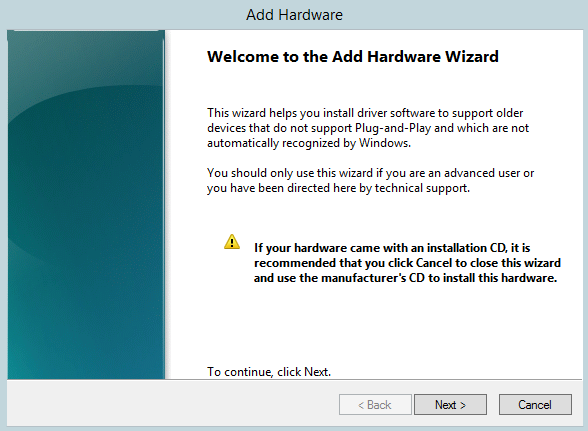
|
|
Select the advanced option
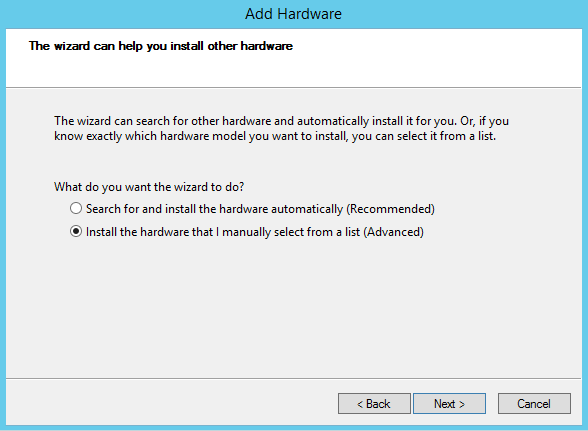
|
Select Network adapters
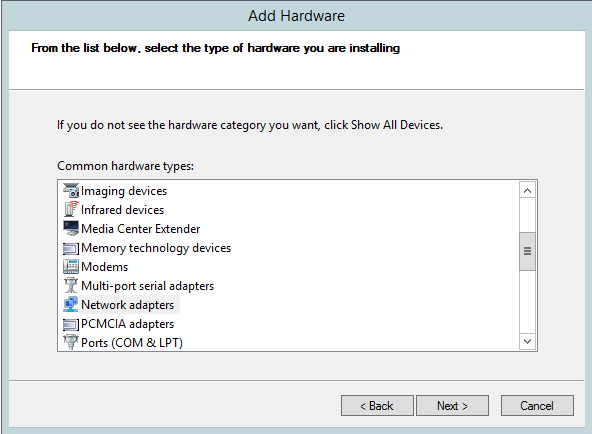
|
- Select Microsoft
- Select Microsoft KM-Test
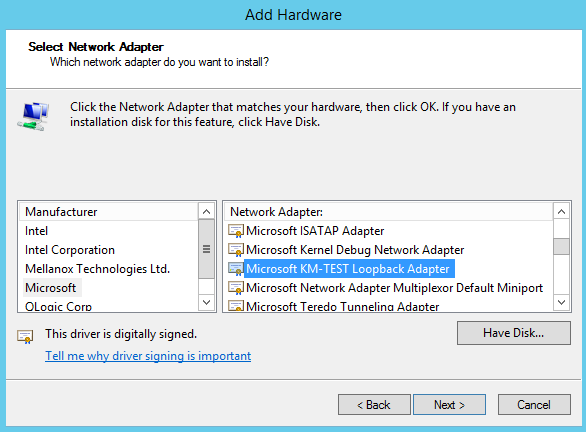
|
Confirm
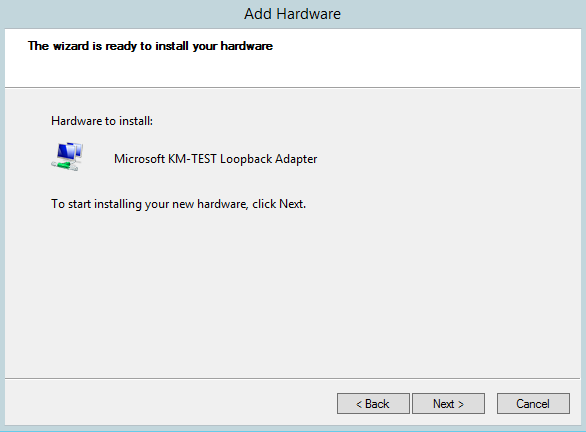
|
Confirm again
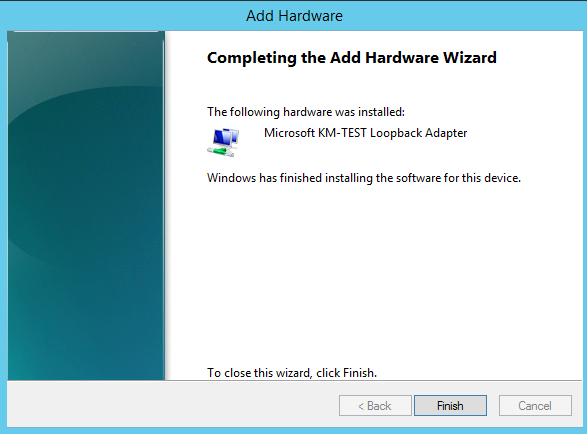
Configure the new loop back device
Within Windows, goto the Network connections,
with Server 2012 you can run and type ncpa.ctl
|
Rename to loopback adapter to loopback,
rename the ethernet adapter to lan

|
Edit the properties of IPv4 of the loopback adapter
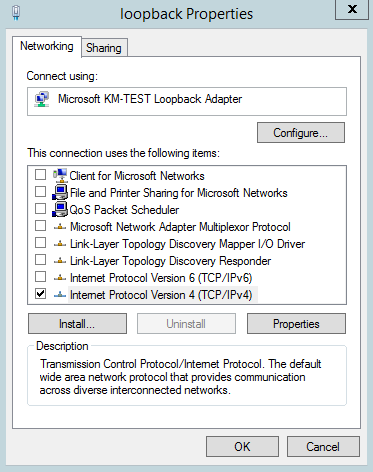
|
|
Enter the VIP (Virtual IP) = 192.168.2.220/24,
click Advanced
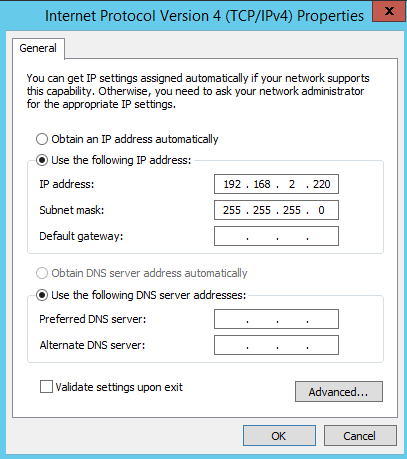
|
Disable Automatic metric,
make the adapter aware of the ARP issue
Enter a high number, like 254, click OK
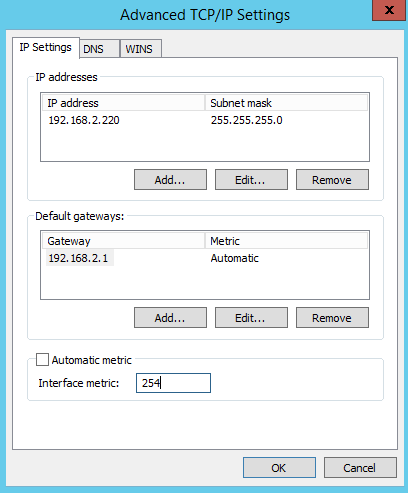
|
Open an administrative console and enter:
netsh interface ipv4 set interface "lan" weakhostreceive=enabled
netsh interface ipv4 set interface "loopback" weakhostreceive=enabled
netsh interface ipv4 set interface "loopback" weakhostsend=enabled
See this for more information about those commands:
Testing the new loop back device
|
From the Windows host try to open the URL
From an Network client try to open the URL
|
The result should be the default IIS Webpage
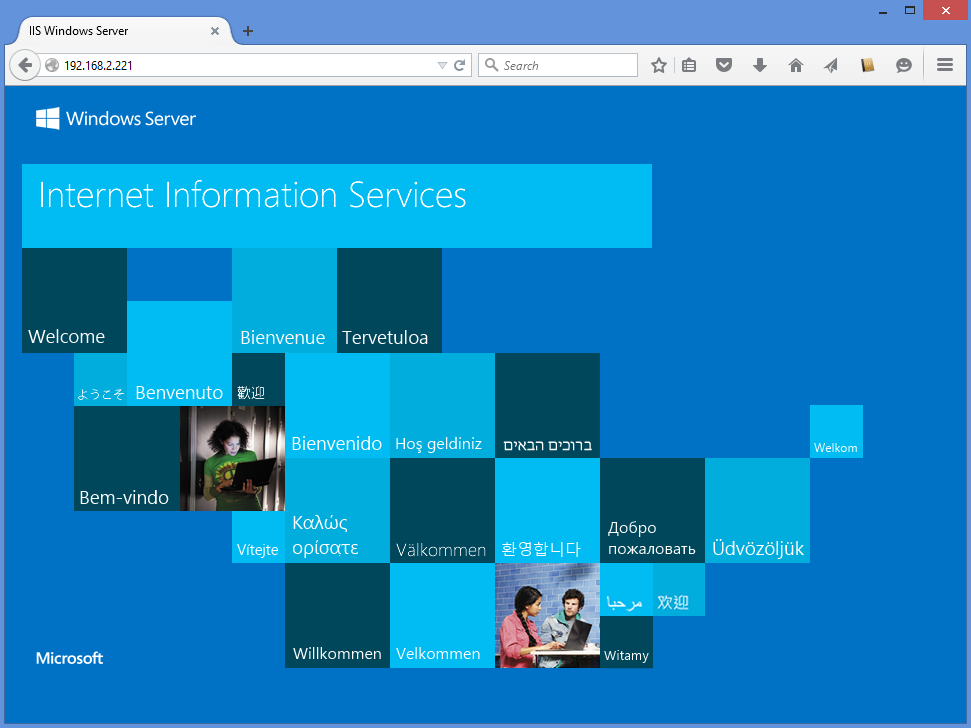
|
|
Goto myLVS and enable the Windows host and
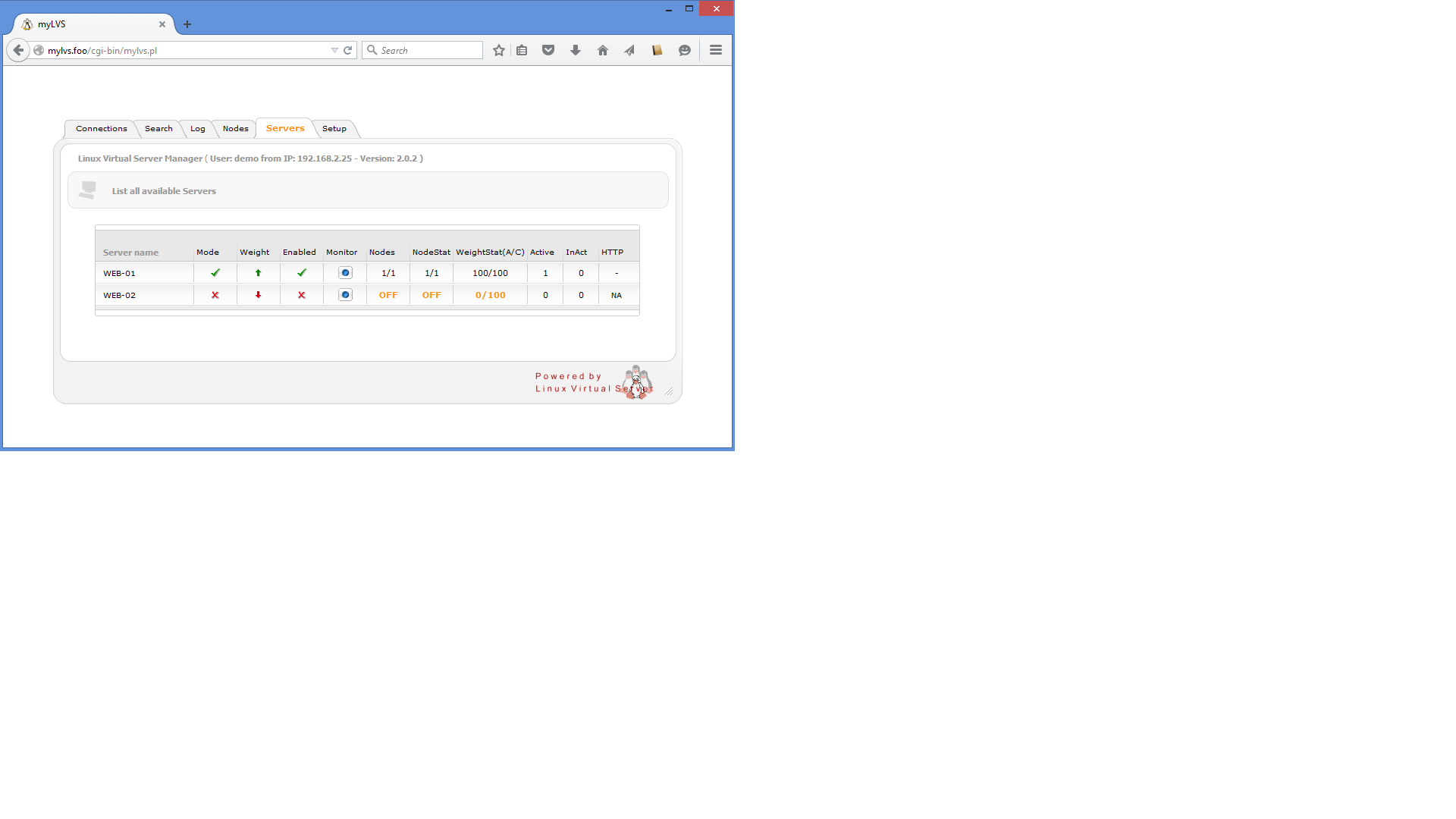
|
to see the connection list:
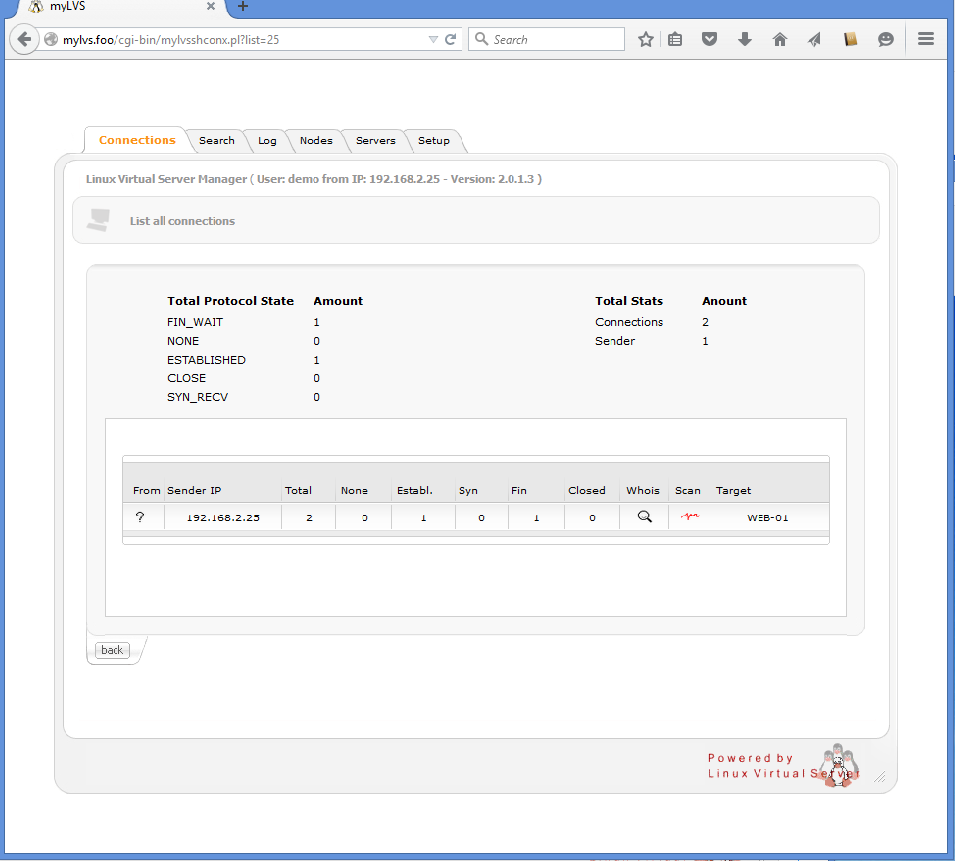
|
















